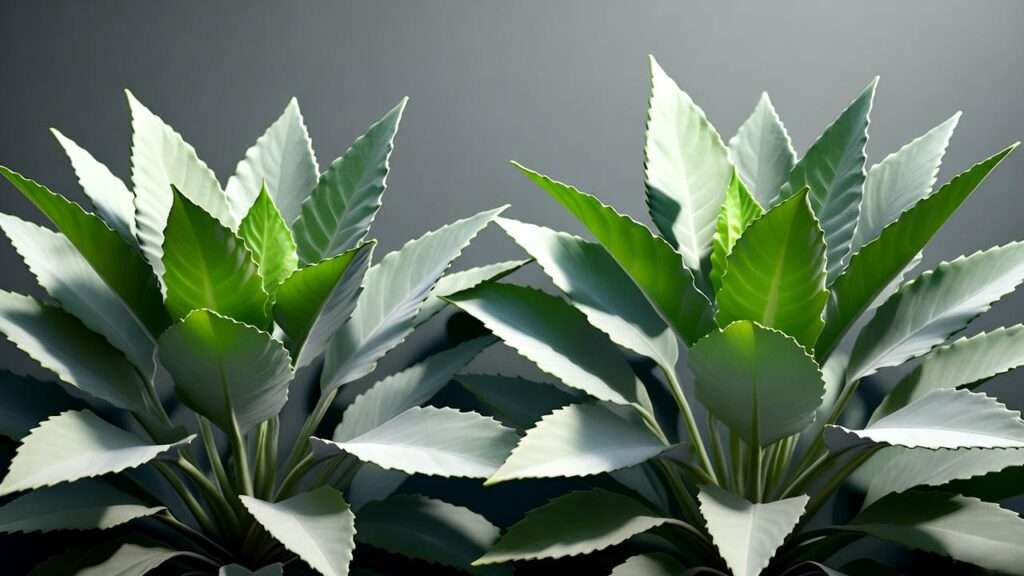Have you ever looked at your garden and felt… flat? Perhaps it’s a sea of similar greens that blend together, lacking the dynamic pop that stops visitors in their tracks. We often obsess over flowers, but the true secret to a sophisticated, high-impact landscape lies not in color, but in contrast and texture.
Welcome to the world of silver-green plants—the ultimate, often-overlooked secret weapon for adding luminosity, depth, and aristocratic sophistication to any landscape. These remarkable beauties possess a silvery hue that makes them glow in the twilight and shimmer under the midday sun, providing a cool visual counterbalance to every other color in your yard. Beyond their undeniable aesthetic appeal, these plants are nature’s toughest specimens. This guide promises to unlock the dual benefits that every gardener craves: low-maintenance care coupled with unrivaled high-impact design. We’ll provide the best varieties, professional care tips, and advanced design secrets that will permanently transform your garden’s aesthetic.
II. The Science and Expertise Behind Silver Foliage (E-E-A-T Foundation)
The beauty of silver-green plants is more than just skin deep; it’s a testament to nature’s genius. Understanding why these plants adopt this metallic hue is the foundation of knowing how to properly care for them and where to best feature them in your landscape.
H3: The Role of Trichomes: Why Plants Go Silver
The silvery appearance isn’t a pigment; it’s a structural feature. Most silver-toned foliage is densely covered in tiny, fine hairs known as trichomes. These minute structures act like miniature mirrors.
- Function: Trichomes diffuse light across the leaf surface, which dramatically reduces the intensity of direct sunlight hitting the chlorophyll underneath. This is a critical adaptation for survival.
- Aesthetic Impact: This light diffusion is what gives the leaves their characteristic soft, velvety, or sometimes almost frosted appearance, creating an unmatched textural element in the garden.
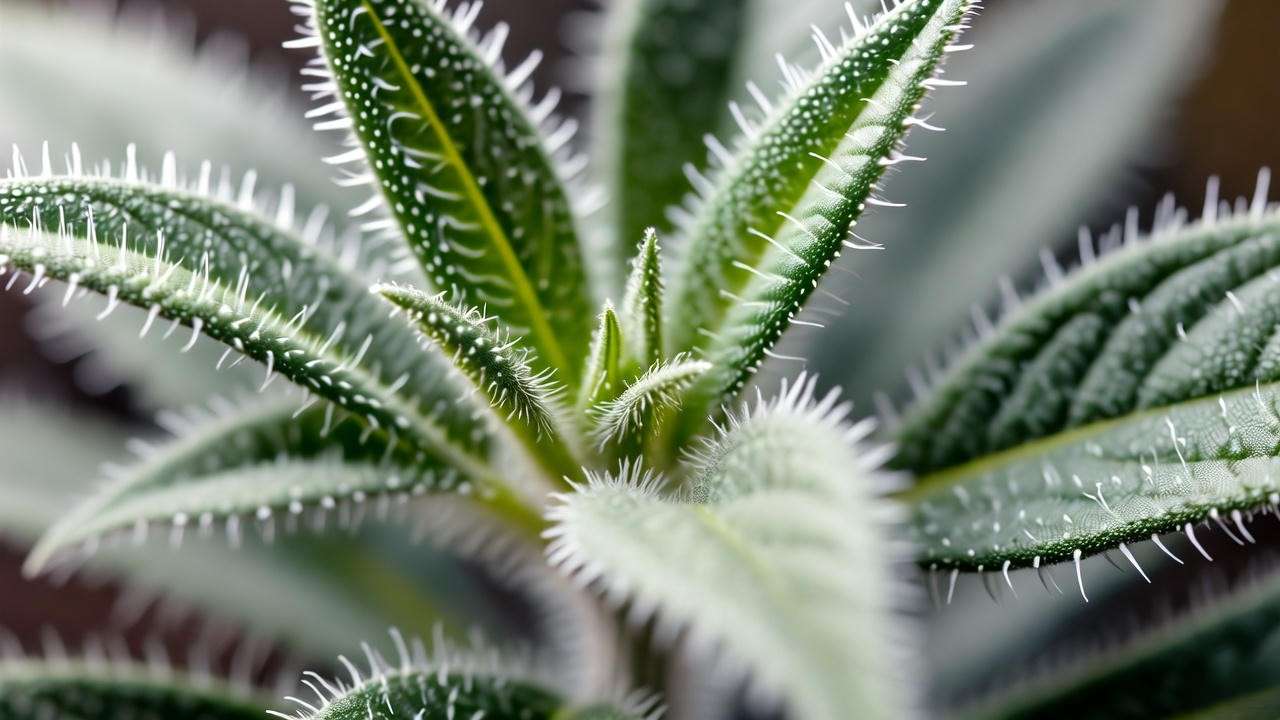
H3: Natural Defense Mechanism (The Low-Maintenance Link)
The silvery defense mechanism directly translates into the low-maintenance qualities gardeners adore. Since the trichomes reflect harsh sunlight, they simultaneously minimize water loss through transpiration.
- Drought Tolerance: This adaptation means that most silver-foliage plants originate from arid, Mediterranean, or high-altitude regions. They are genetically engineered to thrive in conditions other plants would perish in: intense heat, poor soil, and minimal water.
- The Gardening Takeaway: When we observe their drought tolerance, we know their primary requirement in a domestic garden is excellent drainage. Forgetting to water them occasionally is usually better than overwatering.
H3: The Unique Appeal in Landscape Design
In the language of landscape design, silver is arguably the most powerful element after green itself.
- The Ultimate Neutral: Silver functions as the garden’s best neutral color, similar to gray or white in interior design. It has an extraordinary ability to harmonize clashing colors. It can cool down the “hot” side of the spectrum (fiery reds, oranges, yellows) and amplify the “cool” side (electric blues, deep purples).
- Year-Round Interest: Unlike ephemeral flowers, foliage provides structure. Silver-green plants excel when the rest of the garden is dormant or drab. In a late autumn garden, the silver of a Russian Sage or a Lamb’s Ear truly stands out, maintaining visual structure and luminosity.
III. 🌿 Top 12 Silver-Green Plants for Low-Maintenance Gardens (The Varieties)
The key to a high-impact, low-maintenance garden is selecting the right plants for the right location. Here are the top silver-green varieties categorized by their primary function in the landscape.
A. Hardy Perennials & Groundcovers (Immediate Impact)
These are the foundation plants that knit the landscape together, offering superior textural contrast at ground level.
- H3: Lamb’s Ear (Stachys byzantina):
- The Look: Famous for its incredibly soft, felt-like, woolly leaves. It’s almost impossible not to touch.
- Use: Perfect as a soft, flowing border edging, a resilient groundcover to fill gaps, or for contrast against hardscaping like pavers and stones.
- Care Profile: Thrives in full sun and well-drained soil. Requires occasional deadheading to manage flowers (or choose non-flowering cultivars like ‘Helen von Stein’).
- H3: Snow in Summer (Cerastium tomentosum):
- The Look: A dense mat of silvery-gray leaves that explode with masses of small white flowers in early summer, giving the plant its common name.
- Use: A rapid-spreading, dense groundcover that tolerates foot traffic and is excellent for stabilizing slopes or planting in rocky areas.
- Care Profile: Highly drought-tolerant once established. Shear back lightly after flowering to maintain a tight, silvery carpet.
- H3: Artemisia ‘Silver Mound’:
- The Look: An herbaceous perennial that forms a near-perfect, fine-textured, mounding dome of intensely silver-gray foliage.
- Use: Ideal for mass planting as a repeating geometric accent or used individually as a stunning low accent piece along pathways.
- Expert Tip: Plant in poor, sandy soil. If it gets too leggy or floppy in mid-summer (a condition called “splitting”), shear it back hard by a third, and it will quickly flush out with fresh, dense new growth.
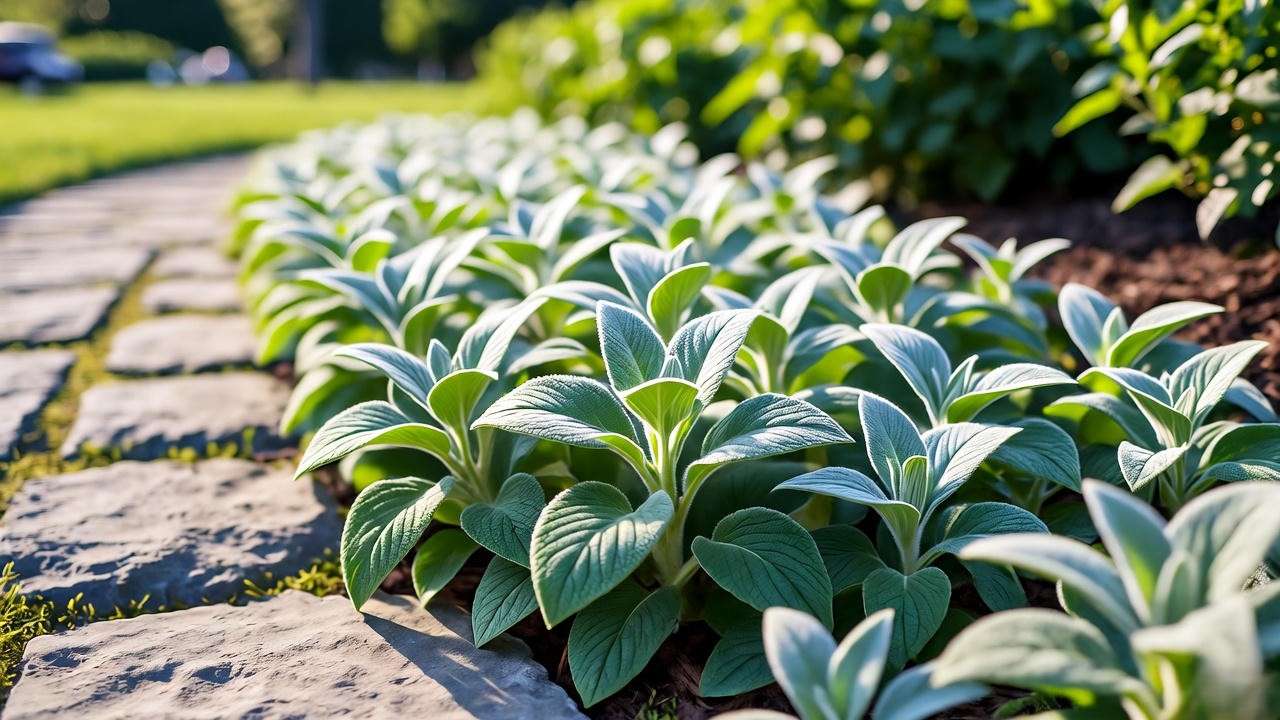
B. Structural Shrubs & Sub-Shrubs (High-Impact Structure)
For gardens that need height, permanence, and year-round interest, these woody specimens are indispensable.
- H3: Lavender (Lavandula):
- The Look: While known for its purple flowers and aroma, the dense, narrow, silver-green foliage is the true backbone of the plant, giving it structure all season. English and Spanish varieties tend to have the deepest silver tones.
- Use: Essential for hedging, knot gardens, container plantings, or massed along a walkway where the scent can be enjoyed.
- Care Profile: Requires full sun (6+ hours) and excellent drainage. The most crucial care element is pruning—shear it back by a third after flowering to prevent the plant from becoming woody and sparse at the base.
- H3: Russian Sage (Perovskia atriplicifolia):
- The Look: A sub-shrub with airy, upright, silvery-white stems and small, lobed, silver-green leaves. It adds an ethereal, wispy texture and height.
- Use: Perfect for the mid-to-back border of a perennial garden, adding fantastic vertical texture that pairs well with solid flower shapes like coneflowers or salvias. It is one of the toughest plants for challenging, dry spots.
- H3: Conifers (Blue Spruce Varieties):
- The Look: Certain conifers, like the Colorado Blue Spruce or dwarf cultivars such as Picea pungens ‘Globosa’, offer a stunning silver-blue hue that provides permanent, architectural focus, especially in winter.
- Use: Essential for year-round structure, screening, or as a stand-alone focal point (specimen plant).
- Expert Insight: When choosing conifers for silver-blue foliage, look for varieties explicitly noted for their “glaucous” color, which means they have a thick, waxy coating on the needles that creates the blue-silver effect.
C. Drought-Tolerant Succulents & Annuals (Container & Accent Use)
For modern gardens, containers, or simply to fill in until perennials establish, these are the go-to choices.
- H3: Blue Chalksticks (Senecio serpens):
- The Look: A striking succulent with fleshy, cylindrical, blue-silver leaves that curve slightly upward, providing bold texture.
- Use: Excellent for container gardens, rock gardens, or as a spill-over plant in hanging baskets, bringing a contemporary, architectural feel.
- H3: Dusty Miller (Senecio cineraria):
- The Look: A classic annual or tender perennial known for its deeply cut, lacy leaves covered in soft, white, silvery down.
- Use: The best choice for seasonal displays, window boxes, and as a powerful white accent to set off bright annuals like petunias and impatiens.
- H3: Sedum/Stonecrop (Specific Silver Varieties):
- The Look: Look specifically for varieties like Sedum spectabile ‘Silver Star’ or those with a high glaucous coating. They offer chunky, architectural leaves that store water efficiently.
- Use: Highly effective in green roofs, rock gardens, and crevices. Their resilience is legendary, making them a true low-maintenance choice.
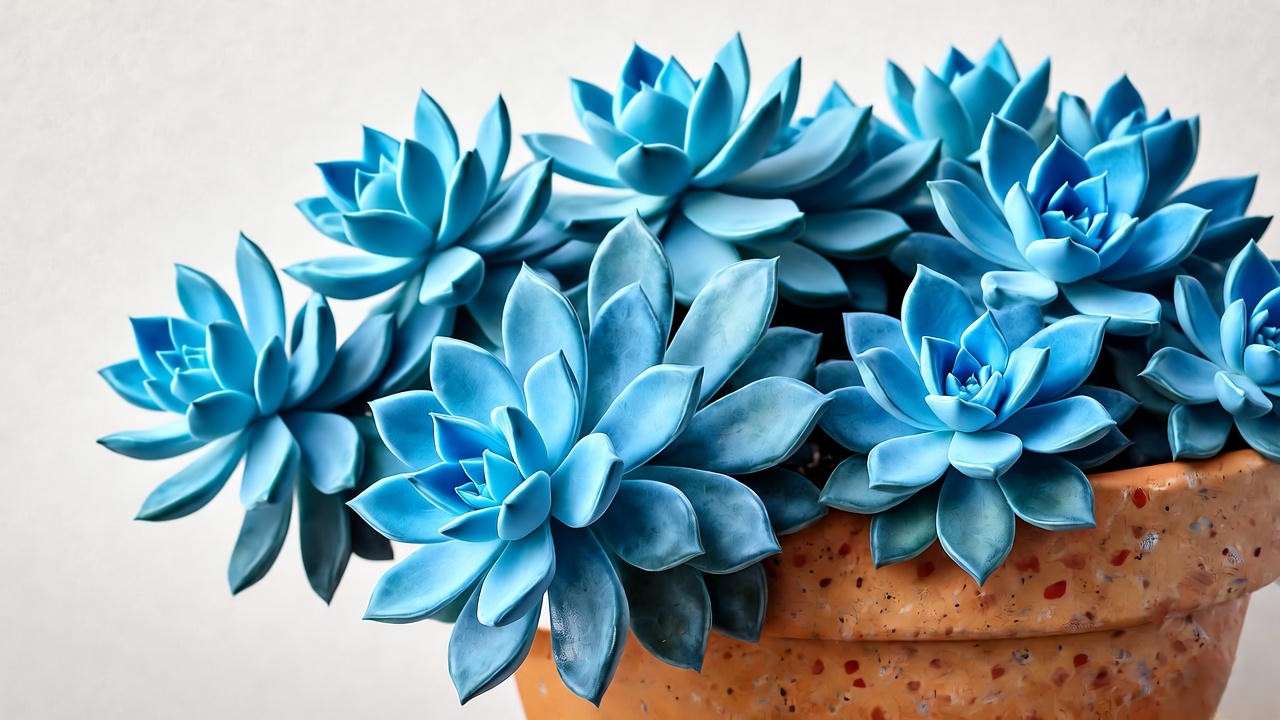
IV. 🎨 Expert Design Strategies: Transforming Your Garden with Silver
A plant list is useful, but a true expert knows how to use these plants to achieve breathtaking results. Silver-green plants are the ultimate tool for manipulating light, color, and perception in your garden.
A. Color Theory and Contrast
Silver is not just a filler; it’s a sophisticated tool for managing your color palette.
- H3: The Triple Threat Pairing:
- Cooling Down the Fire: Use the cool, silvery tones next to “hot” colors—fiery reds, oranges, and deep yellows. The silver provides a visual “rest stop” for the eye, preventing the hot colors from becoming overwhelming. For example, planting Russian Sage near the bright blooms of Crocosmia creates dynamic energy without visual chaos.
- Amplifying Cool Tones: The contrast between silver and deep purples, maroons, or true blues makes the darker colors appear richer and more saturated. Try pairing Lamb’s Ear with Black Scallop Ajuga or deep purple bearded irises.
- The White Effect: Silver next to pure white flowers makes the white appear brighter, cleaner, and more crisp, adding an element of elegance.
- H3: Creating Depth and Distance:
- In landscape painting, artists often use cool, hazy colors to suggest distance. You can use this trick in your garden! Plant your most silver-toned plants (Artemisia or a silver-blue conifer) at the rear of a border. The cool color will make them optically recede, creating the illusion of a deeper, larger garden space.
B. Textural Contrast and Depth
Texture is the third dimension of gardening, and silver plants offer some of the most dramatic texture possible.
- H3: Pairing Opposites for Dynamics: Never place two smooth-leaved green plants next to each other if you want maximum impact. Contrast is key. Pair the soft, fuzzy texture of Lamb’s Ear (a silver plant) with the sharp, spiky texture of Yucca or the glossy, smooth leaves of a Hostas variety. This combination of opposites is visually compelling and highly professional.
- H3: The Softening Effect: Use mounds of soft, silver foliage, like Artemisia ‘Silver Mound’, to soften the edges of hardscaping, such as stone walls, poured concrete, or sharp, angular planters. It creates a graceful transition between the built environment and the garden.
C. Creating an Enchanted Moonlight Garden
Silver leaves truly come alive after sunset, maximizing the garden’s nighttime appeal—a necessity for modern lifestyles.
- H3: Silver as a Luminary: Unlike dark green leaves that disappear into the evening shadow, silver-green plants reflect ambient light from the moon, nearby streetlights, or pathway lights.
- The Glowing Effect: Plant masses of silver foliage in areas you frequent in the evening (near a patio or walkway). The plants will appear to glow softly, creating a magical, restful atmosphere. Pair them with white or pale pink night-blooming flowers for a truly luminous moonlight garden.
V. 💧 Essential Care Guide for Low-Maintenance Silver Plants
The promise of low-maintenance is achievable, but it depends on replicating the arid, sunny conditions these silver-green plants have adapted to. The biggest mistake most gardeners make is treating them like their thirsty, lush green counterparts.
A. The Importance of Soil Drainage
This is the single most crucial factor for success.
- H3: Mimicking Their Natural Habitat: Remember the trichomes are a defense against drought. The plant’s roots are adapted for fast-draining, often rocky or sandy soil where water quickly passes through.
- H3: Amending Heavy Clay: If you have heavy clay soil (which retains water), you must amend the planting site. Don’t just add compost; that can hold too much moisture. Instead, incorporate large volumes of inert materials like gravel, coarse horticultural grit, or perlite to physically separate the soil particles and ensure rapid drainage. A raised bed or mounded planting is often the best solution.

B. Water Wisely (Less is More)
Overwatering is the number one killer of silver-green plants.
- H3: Deep, Infrequent Watering: After the plants are established (typically after their first season), they require very little supplemental water. When you do water, do it deeply to encourage strong, deep roots, but allow the soil to dry out completely—not just on the surface, but a few inches down—between watering sessions.
- H3: Overhead Watering Warning: Try to water at the base of the plant. Soaking the leaves of highly fuzzy varieties (like Lamb’s Ear) can cause the dense trichomes to mat down, reducing their visual effect and, more critically, creating a damp environment where fungal diseases like rot or mildew can quickly take hold.
C. Pruning and Maintenance for Longevity
Minimal maintenance is needed, but proper pruning ensures your plants remain dense, silver, and structurally appealing.
- H3: Air Circulation and Deadheading: For any fuzzy-leaved plant, good air circulation is a must. Plant them with adequate spacing. Deadheading (removing spent flowers) on plants like Lavender or Russian Sage redirects the plant’s energy into new foliage and roots instead of setting seed, extending its vigor.
- H3: The Mid-Season Shear: Many shrubby or mounding silver plants (like Artemisia) can become “leggy” or sparse in the center as the season progresses. Don’t be afraid to give them a hard mid-season shear. Cut back the plant by up to one-third in early summer. This encourages a fresh flush of dense, compact, and highly silver new growth, preventing flopping and maintaining a tight shape.
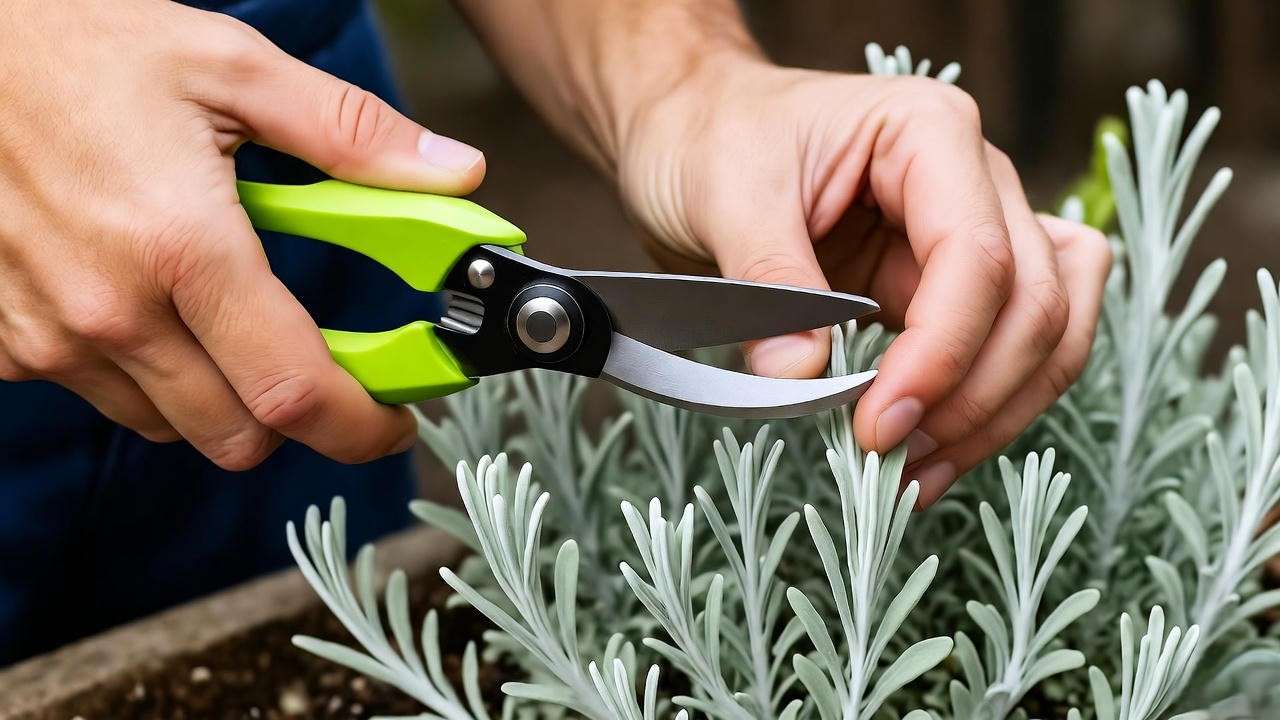
VI. ❓ Troubleshooting and Frequently Asked Questions (FAQ Section)
An expert guide is incomplete without addressing the common challenges gardeners face, demonstrating authority and improving long-tail SEO performance.
A. Common Pests and Diseases
- H3: Root Rot and Fungal Issues: The main enemy of silver plants is moisture-related fungal disease, including root rot, rust, and powdery mildew. If you see leaves turning yellow or mushy at the base, it’s almost certainly overwatering or poor drainage.
- Solution: Immediately stop watering, improve drainage by mounding the soil, and ensure the plants are not too crowded. In extreme cases, you may need to dig the plant up, trim any mushy roots, and replant in a better-draining site.
- H3: Dealing with Leggy Growth: If plants stretch tall and look sparse, they are likely searching for more light.
- Solution: Move the plant to a location with fuller sun (at least 6-8 hours). If moving isn’t possible, apply the mid-season shear technique to force bushier growth, but understand the problem will likely recur without better light.
B. Frequently Asked Questions (FAQ)
| Question | Expert Answer |
| “Do silver-green plants need full sun?” | Generally, yes. The silver coating is a defense mechanism developed in high-sun environments. In shade, they will lose their dense, silvery color and become weak, leggy, and more susceptible to rot. Aim for 6+ hours of direct sunlight. |
| “Are all silver plants deer resistant?” | Many are, but not all. The trichomes or the presence of fragrant oils (especially in Lavender, Artemisia, and Russian Sage) make them unpalatable to deer. Always check specific variety profiles, but the vast majority of fuzzy or aromatic silver plants deter deer. |
| “What is the best fertilizer for silver foliage?” | Minimal to none. High-nitrogen fertilizers (the type that promote lush green growth) can be detrimental. They can encourage weak, overly rapid growth that is more prone to flop. If your soil is very poor, a single spring application of a balanced, slow-release fertilizer is enough. The best fertilizer is good soil drainage. |
| “Why is my Lamb’s Ear turning green?” | This indicates a few potential problems: 1) Too much shade, reducing the need for light reflection. 2) Too much water, causing the plant to prioritize growth over its natural defense mechanism. 3) The plant may be a less silver cultivar. Move it to a sunnier spot and reduce watering. |
VII. Conclusion: The Final Transformation ✨
The secret to a truly captivating garden isn’t how many flowers you have, but how elegantly you use the power of foliage to create enduring structure, texture, and light. By understanding the science behind the silvery hue—their natural defense, drought tolerance, and preference for low-maintenance conditions—you gain the expertise to use them like a professional designer.
Silver-green plants are not just survivors; they are artists, ready to add their cool luminosity to your landscape. They provide unmatched textural dynamics, act as the ultimate neutral to manage your color palette, and literally glow as the sun goes down.
Stop settling for a flat green garden. Start small today: incorporate a border of soft Lamb’s Ear along a walkway, or place a striking container of Blue Chalksticks on your patio. Unlock the silver transformation, and watch your garden move from “nice” to absolutely stunning.

